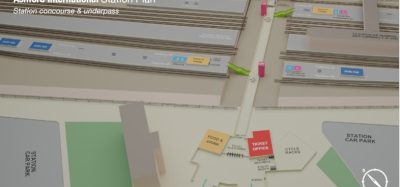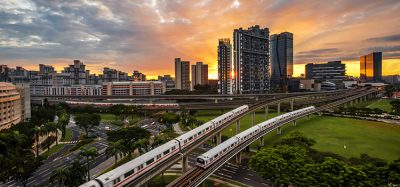The future of Germany’s railways – intermodal and digitally interlinked
Posted: 7 April 2015 | | No comments yet
In international comparisons, Germany is a world leader in terms of infrastructure, logistics and connectivity, writes Alexander Dobrindt, Federal Minister of Transport and Digital Infrastructure, Germany. This safeguards our competitiveness as an exporting nation, thereby securing growth, prosperity and jobs. Linked with this is a continuous growth in the demand for freight transport services. Over the period to 2030, the total volume of inland traffic in Germany is likely to rise by over 30%, and on the railways this figure is over 40%…


In this context, rail freight in particular will gain additional market shares as we want to shift more movements from the roads to rail. In both the freight and passenger transport sectors, the trend is towards an intermodal linkage of operations and the intelligent digitalisation of mobility flows. Innovative approaches such as combined transport, bike or car sharing, and digital travel assistants for rail customers, are making the rail system as a whole more attractive and efficient.
Modernising the existing rail network is our number one priority
Intact and modern infrastructure is the foundation of high-capacity rail transport. When it comes to the funding of this infrastructure, the Federal Government’s priorities have to be repeatedly reviewed and adapted to a changed environment. With the renaissance of rail freight since the start of the 21st century, the priorities have shifted – away from the development of a national high-speed network and towards the modernisation of existing lines.
Once German Unity Transport Project No 8 (Nuremberg–Erfurt–Halle/Leipzig–Berlin) and the new high-speed line between Stuttgart and Ulm have been completed, the construction of new high-speed lines will have been concluded. The Federal Government is now focusing on the modernisation of existing lines, and especially bridges. There has been a sharp increase in the capacity utilisation of the network, and thus the strain imposed on it, not only through the rising volume of rail freight traffic, but also as a result of the devolution of responsibility for local passenger rail services.
The new 2015 Federal Transport Infrastructure Plan reflects the principles of giving structural maintenance precedence over the construction of new infrastructure and enhancing the capacity and efficiency of the existing network. Given the expected growth in freight traffic, the Federal Government will continue to finance some upgrading and new construction schemes. For instance, the German seaports require higher-capacity rail links to and from their hinterland. For this reason, the Federal Government intends to press ahead with removing bottlenecks and developing the major arteries and transport hubs.
Our national strategy is fully in line with the objectives of European railway policy. Six of the nine freight corridors of the TEN-T core network pass through Germany. As a major exporting nation and transit country at the heart of Europe, we are immensely keen to ensure high-capacity cross-border rail freight links.
Investment in railway infrastructure at an all-time high
For this reason, we are significantly increasing the volume of funding for rail investment so that we will continue to be able to guarantee the high quality of the existing rail network. Wherever necessary, we are removing bottlenecks by constructing new and upgrading existing infrastructure. The Coalition Agreement states that the funds for investment in transport infrastructure will be topped up by a total of €5 billion over the period to 2017. This, together with the fact that funds not used can be carried over to the next year, is a good basis for sustaining this high level of investment. It means that more than €1 billion additional will be invested in the railway infrastructure. With an increase from €4.3 billion to around €5 billon per annum, the 2015 Federal Budget and the level of investment in the 2016 to 2018 Financial Plan already reflect the additional funding for transport investment provided for in the 2013 Coalition Agreement. We are thus heading towards an all-time high.
To finance the replacement of capital assets on the existing network, the Federal Government and Deutsche Bahn signed the Second Service Level and Funding Agreement on 12 January 2015. It provides for the Federal Government and Deutsche Bahn to jointly provide a total of €28 billion between 2015 and 2019 to finance network maintenance. This is significantly more money than previously. In return, Deutsche Bahn has for the first time undertaken to meet more stringent quality requirements.
Digitalisation – Mobility 4.0 in rail transport
The rail system has also received a tremendous innovative thrust from the onward march of digitalisation. Seamless electronic timetable information, electronic ticketing (eTicket Deutschland) and free Wi-Fi on all trains and at all stations are examples of the interconnected mobility of the future – Mobility 4.0.
The construction of major infrastructure projects is also going digital. The introduction of a four-dimensional planning tool – Building Information Modelling (BMI) – means that planning and design are first done digitally before actual construction takes place. This makes it possible to identify time-critical and budgetary challenges in advance and to address them in a targeted manner. This promotes timely completion and compliance with the cost ceiling in the interests of all parties involved. We will make use of this during our modernisation drive.
We are investing heavily in railway infrastructure, modernising rail transport and making it fit for the future using innovative technology and digital connectivity. The railways can thus become the means of transport of the future.
Stay Connected with Global Railway Review — Subscribe for Free!
Get exclusive access to the latest rail industry insights from Global Railway Review — all tailored to your interests.
✅ Expert-Led Webinars – Gain insights from global industry leaders
✅ Weekly News & Reports – Rail project updates, thought leadership, and exclusive interviews
✅ Partner Innovations – Discover cutting-edge rail technologies
✅ Print/Digital Magazine – Enjoy two in-depth issues per year, packed with expert content
Choose the updates that matter most to you. Sign up now to stay informed, inspired, and connected — all for free!
Thank you for being part of our community. Let’s keep shaping the future of rail together!







